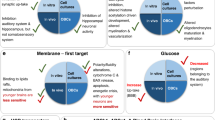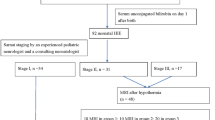Abstract
ABSTRACT: We evaluated the feasibility of using the in vitro transverse rat hippocampal slice as a model to study the effect of bilirubin on neuronal activity. Bilirubin in concentrations from 100 μmol/liter to 1 mmol/liter with bovine serum albumin as a stabilizer caused a significant decrease in the slope of the field excitatory postsynaptic potentials, concomitant with a significant increase in the peak latency of the population spike. These changes were partially reversible when bilirubin was removed from the incubation fluid. A partially reversible shift to the right of the presynaptic fiber volley/field excitatory postsynaptic potential relationship was interpreted as an expression of a reduction in synaptic activation. A partially reversible shift to the left of the field exitatory postsynaptic potential population spike relationship was interpreted as an expression of increased postsynaptic excitability. In conclusion the in vitro rat hippocampal slice was used successfully to study the effect of bilirubin on neuronal activity. A depressive effect of bilirubin was observed.
Similar content being viewed by others
Article PDF
Author information
Authors and Affiliations
Rights and permissions
About this article
Cite this article
Ruud Hansen, T., Paulsen, O., Gjerstad, L. et al. Short-Term Exposure to Bilirubin Reduces Synaptic Activation in Rat Transverse Hippocampal Slices. Pediatr Res 23, 453–456 (1988). https://doi.org/10.1203/00006450-198805000-00002
Received:
Accepted:
Issue Date:
DOI: https://doi.org/10.1203/00006450-198805000-00002
This article is cited by
-
Changes in BAER wave amplitudes in relation to total serum bilirubin level in term neonates
European Journal of Pediatrics (2009)
-
Bilirubin Brain Toxicity
Journal of Perinatology (2001)
-
Interactions of bilirubin with isolated presynaptic nerve terminals: Functional effects on the uptake and release of neurotransmitters
Cellular and Molecular Neurobiology (1993)



